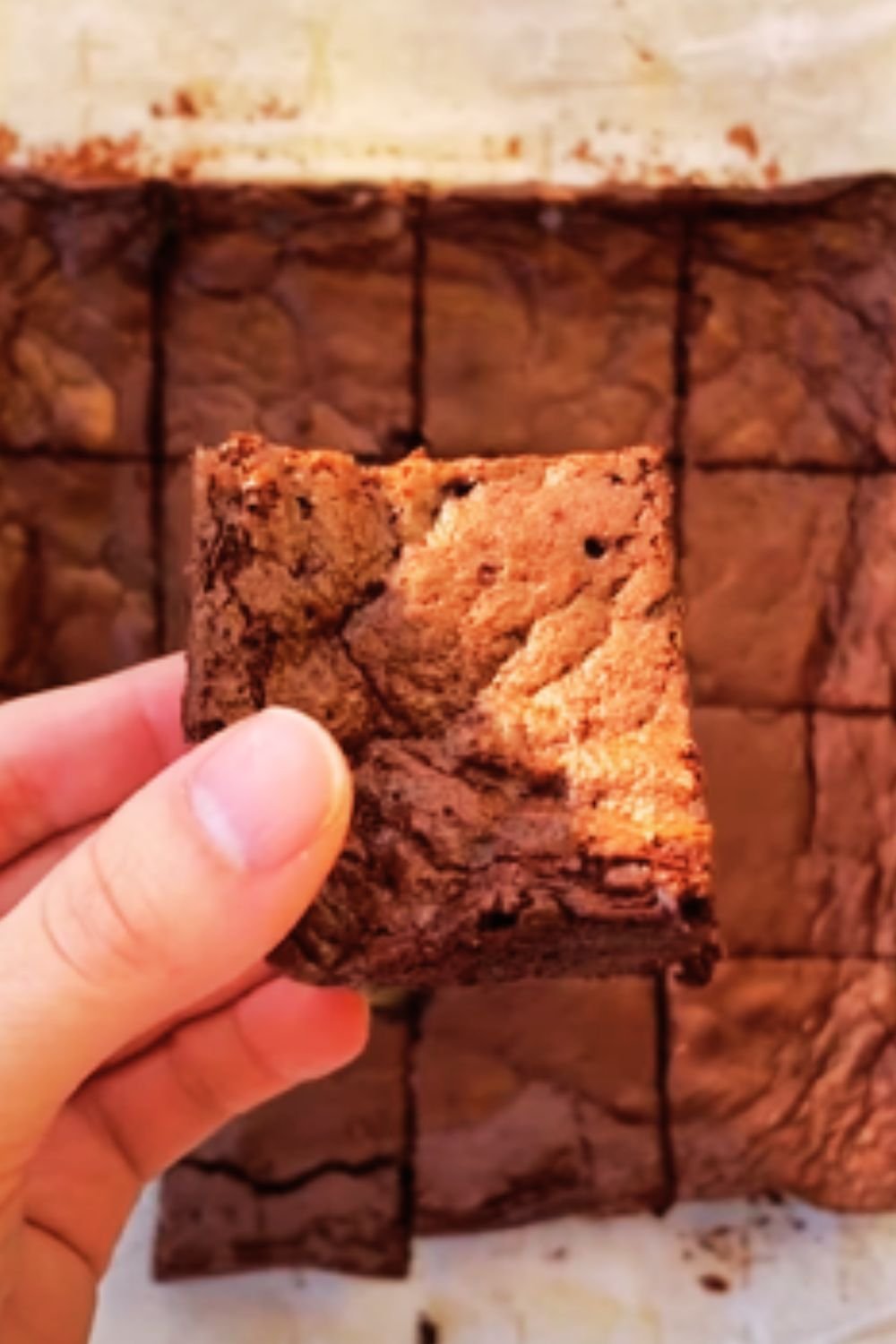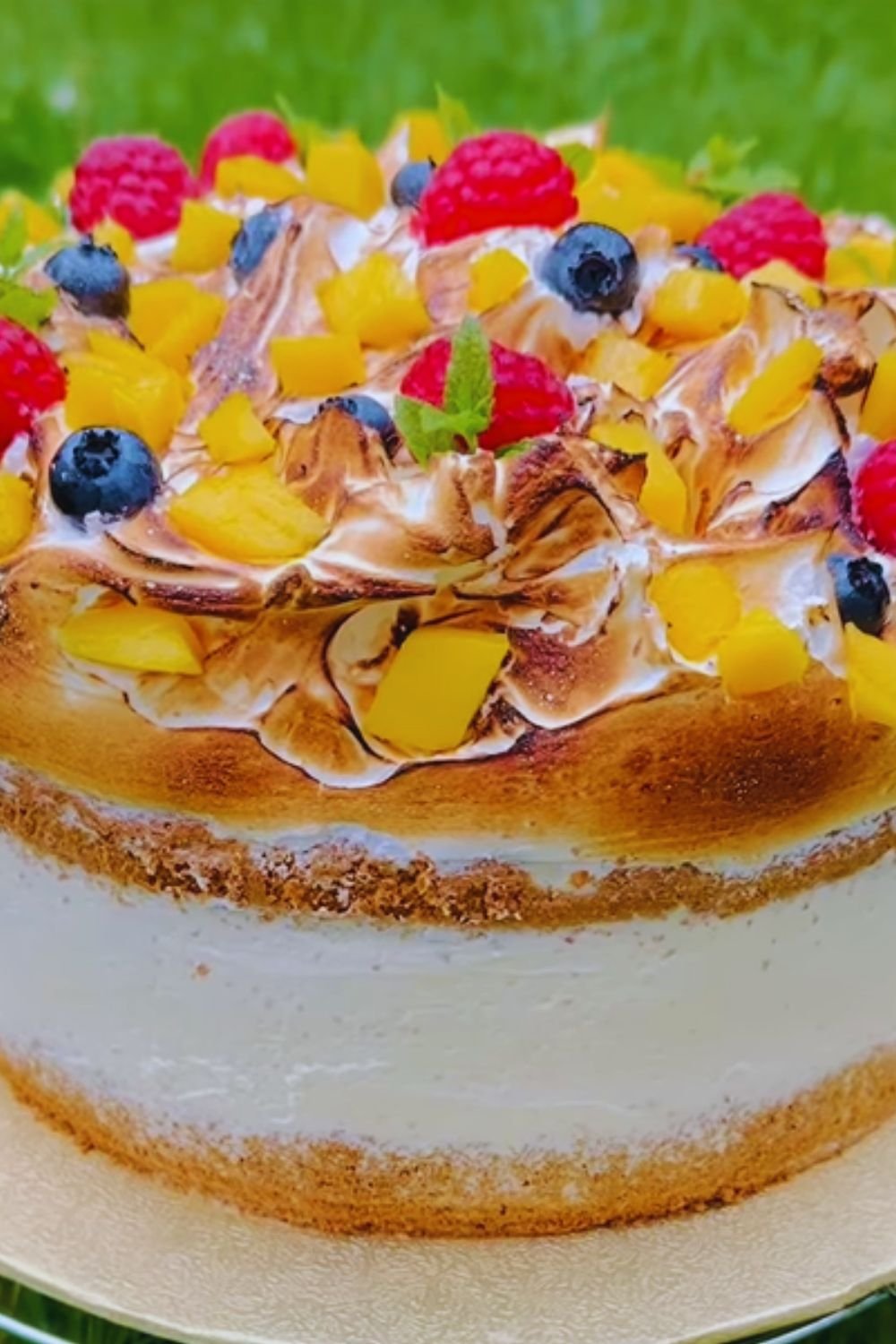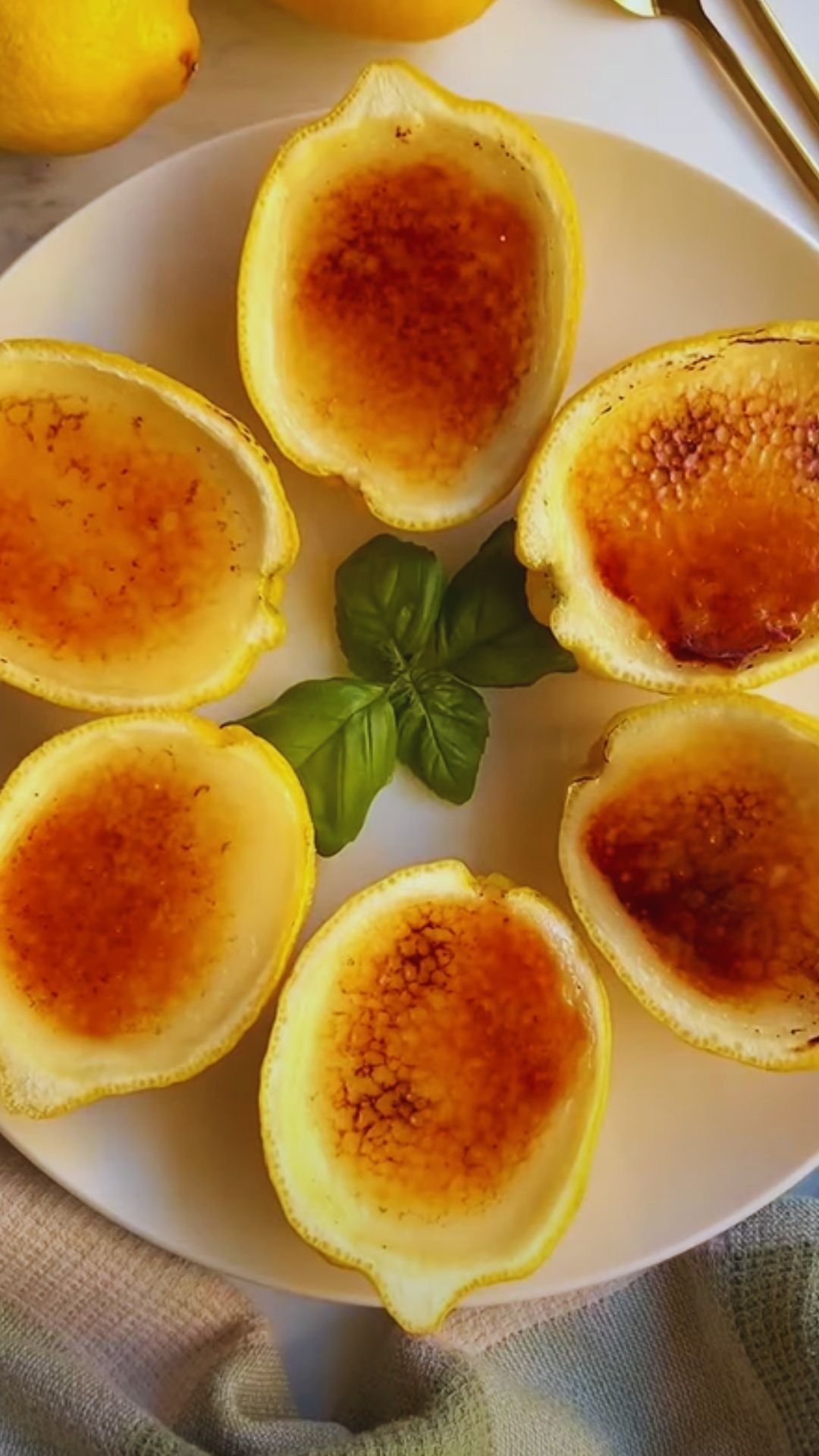Have you ever found yourself torn between the chewy delight of mochi and the rich decadence of brownies? Well, I’ve got fantastic news for you! You no longer have to choose between these two beloved desserts. Mochi brownies bring together the best of both worlds – the springy, glutinous texture of Japanese mochi and the deep chocolate flavor of American brownies. As someone who’s experimented with countless dessert recipes over the years, I can confidently say that mochi brownies are a game-changer in the world of fusion desserts.
What Are Mochi Brownies?
Mochi brownies are an innovative culinary creation that combines the distinctive chewiness of mochi with the rich, chocolatey goodness of traditional brownies. Unlike regular brownies, which use all-purpose flour as their base, mochi brownies incorporate glutinous rice flour (also known as sweet rice flour or mochiko), the same ingredient used to make traditional Japanese mochi. This special flour gives the brownies their signature bouncy texture while still maintaining that irresistible fudgy quality we all love in a good brownie.
The first time I tried making mochi brownies, I was skeptical. How could something be both a brownie and mochi at the same time? But after that first batch emerged from my oven, with its crackly top and uniquely chewy interior, I was completely sold. Now, I find myself making them regularly, experimenting with different flavor combinations and toppings to keep things interesting.
The History Behind This Fusion Dessert
The story of mochi brownies is a beautiful tale of culinary cross-pollination. Mochi has been a staple in Japanese cuisine for centuries, traditionally consumed during New Year celebrations but now enjoyed year-round in various forms. Brownies, on the other hand, are an all-American classic, invented in the late 19th century and beloved for their rich chocolate flavor and fudgy texture.
The exact origin of mochi brownies is difficult to pinpoint, but they gained significant popularity in Hawaii, where Japanese culinary influence is strong, before spreading to the mainland United States and beyond. I remember first encountering them at a small bakery in Los Angeles’ Little Tokyo neighborhood around 2015, though they were likely being made in home kitchens long before that.
What makes this fusion so successful is how the two desserts complement each other perfectly. The glutinous rice flour adds a chewy texture that actually enhances the fudgy quality of brownies, while the chocolate and sugar bring new depth to the subtle flavor profile of traditional mochi.
Essential Ingredients for Perfect Mochi Brownies
Before we dive into the recipe, let’s take a closer look at the key ingredients that make mochi brownies so special:
Glutinous Rice Flour (Mochiko): This is the star ingredient that gives mochi brownies their distinctive bouncy texture. Despite its name, glutinous rice flour doesn’t contain gluten – the “glutinous” refers to the sticky quality of the rice when cooked.
Cocoa Powder: For that rich chocolate flavor. I recommend using Dutch-processed cocoa powder for a deeper, more intense chocolate taste.
Chocolate Chips or Chunks: These add pockets of melty chocolate goodness throughout your brownies. I like using a mix of semi-sweet and dark chocolate for complexity.
Butter: Adds richness and helps create that coveted fudgy texture.
Sugar: Typically a combination of white and brown sugar for the perfect balance of sweetness and moisture.
Eggs: Act as a binding agent and contribute to the brownies’ structure.
Milk or Coconut Milk: Adds moisture and helps activate the glutinous rice flour.
Vanilla Extract: Enhances the chocolate flavor and adds depth.
Salt: Just a pinch to balance the sweetness and intensify the chocolate flavor.
Comparing Traditional Brownies vs. Mochi Brownies
Let me share a comparison table that highlights the key differences between traditional brownies and mochi brownies:
| Feature | Traditional Brownies | Mochi Brownies |
|---|---|---|
| Base flour | All-purpose flour | Glutinous rice flour (mochiko) |
| Texture | Fudgy or cakey, depending on recipe | Chewy, bouncy, with a slight resistance when bitten |
| Crust | Often crisp on top | Can have a crackly top but generally softer |
| Flavor profile | Rich chocolate forward | Balanced chocolate with subtle rice notes |
| Shelf life | 3-4 days at room temperature | 2-3 days (tends to firm up faster) |
| Freezing capability | Freezes well | Freezes well but texture may change slightly |
| Gluten content | Contains gluten (unless made with alternative flours) | Naturally gluten-free |
| Sugar content | Typically very sweet | Can be adjusted for a less sweet result |
| Fat content | Usually high from butter and chocolate | Can be made with less fat for a lighter version |
| Common additions | Nuts, caramel, frosting | Matcha, black sesame, coconut |
The Ultimate Mochi Brownie Recipe
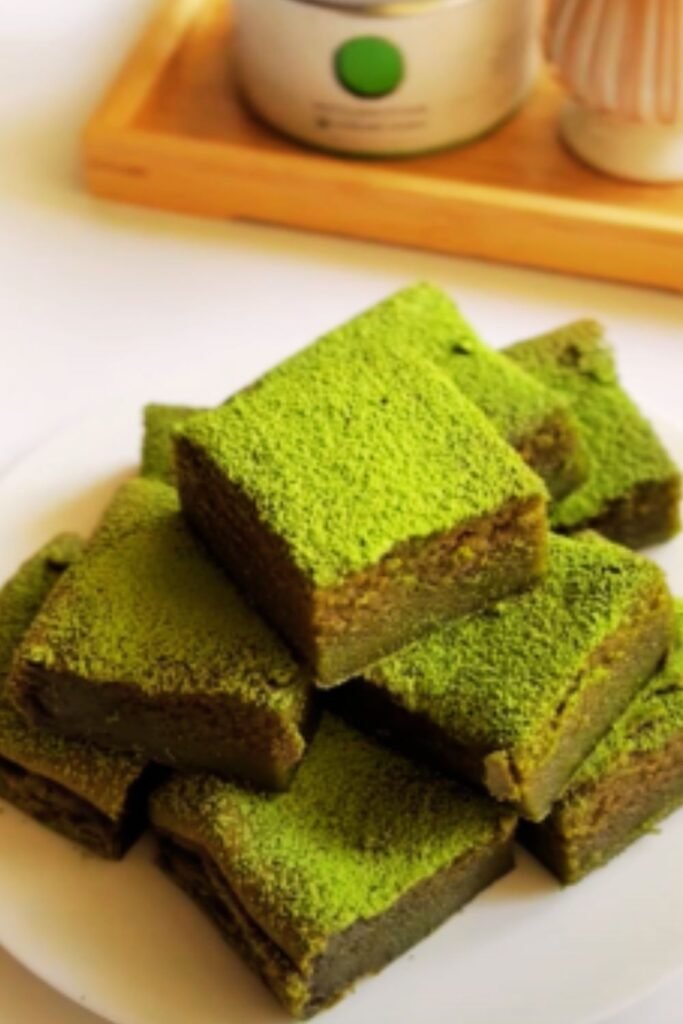
Now, let’s get into the details of making these delightful treats. I’ve perfected this recipe through countless test batches, adjusting ingredients and techniques until I achieved the perfect balance of chewiness and chocolate flavor.
Ingredients:
- 2 cups glutinous rice flour (mochiko)
- 1 cup unsweetened cocoa powder
- 2 teaspoons baking powder
- 1/2 teaspoon salt
- 3/4 cup unsalted butter, melted
- 1 1/2 cups granulated sugar
- 1/2 cup brown sugar, packed
- 4 large eggs, at room temperature
- 1 cup whole milk (or coconut milk for a dairy-free version)
- 2 teaspoons vanilla extract
- 1 cup semi-sweet chocolate chips, divided
Instructions:
- Preheat your oven to 350°F (175°C). Line a 9×13-inch baking pan with parchment paper, leaving some overhang on the sides for easy removal.
- In a medium bowl, whisk together the glutinous rice flour, cocoa powder, baking powder, and salt. Set aside.
- In a large bowl, combine the melted butter, granulated sugar, and brown sugar. Whisk until well incorporated and slightly lightened in color.
- Add the eggs one at a time, whisking well after each addition. Stir in the milk and vanilla extract.
- Gradually add the dry ingredients to the wet ingredients, stirring just until combined. Be careful not to overmix.
- Fold in 3/4 cup of the chocolate chips, reserving the remaining 1/4 cup for the top.
- Pour the batter into the prepared baking pan and spread it evenly. Sprinkle the remaining chocolate chips on top.
- Bake for 40-45 minutes, or until the edges are set and a toothpick inserted into the center comes out with a few moist crumbs.
- Allow the brownies to cool completely in the pan on a wire rack before cutting. This is important as mochi brownies need time to set up properly.
- Once cooled, lift the brownies out of the pan using the parchment paper overhang and cut into squares.
The Science Behind Mochi Brownies’ Unique Texture
What makes mochi brownies so special is the science behind glutinous rice flour. Unlike wheat flour, which contains proteins that form gluten when mixed with liquid, glutinous rice flour contains high amounts of amylopectin, a type of starch that gives mochi its characteristic bouncy texture.
When heated with moisture, the amylopectin molecules in the rice flour gelatinize, creating that distinctive chewy texture. The eggs and butter in the brownie recipe help to soften this chewiness slightly, resulting in a dessert that has the perfect balance between mochi’s bounce and a brownie’s fudginess.
The cocoa powder and chocolate chips disperse throughout this matrix, providing rich chocolate flavor in every bite. I find this interaction between the ingredients absolutely fascinating – it’s a perfect example of how understanding food science can help us create new and exciting culinary experiences.
Common Mistakes to Avoid
Through my many batches of experimenting with mochi brownies, I’ve encountered several pitfalls that can affect the final result. Here are some common mistakes to avoid:
Using the wrong type of rice flour: Make sure you’re using glutinous rice flour (mochiko), not regular rice flour. They are not interchangeable, and your brownies won’t have the right texture if you use the wrong one.
Undermixing the batter: The glutinous rice flour needs to be fully incorporated to achieve the proper texture. Make sure there are no dry pockets of flour in your batter.
Overbaking: Mochi brownies should be slightly underbaked for the best texture. Overbaking will make them dry and tough rather than chewy and fudgy.
Cutting them too soon: Patience is key! Mochi brownies need time to cool and set up properly. Cutting them too soon will result in a gooey mess.
Not storing properly: These brownies tend to firm up more quickly than traditional brownies. Store them in an airtight container with parchment paper between layers to maintain their texture.
Exciting Flavor Variations to Try
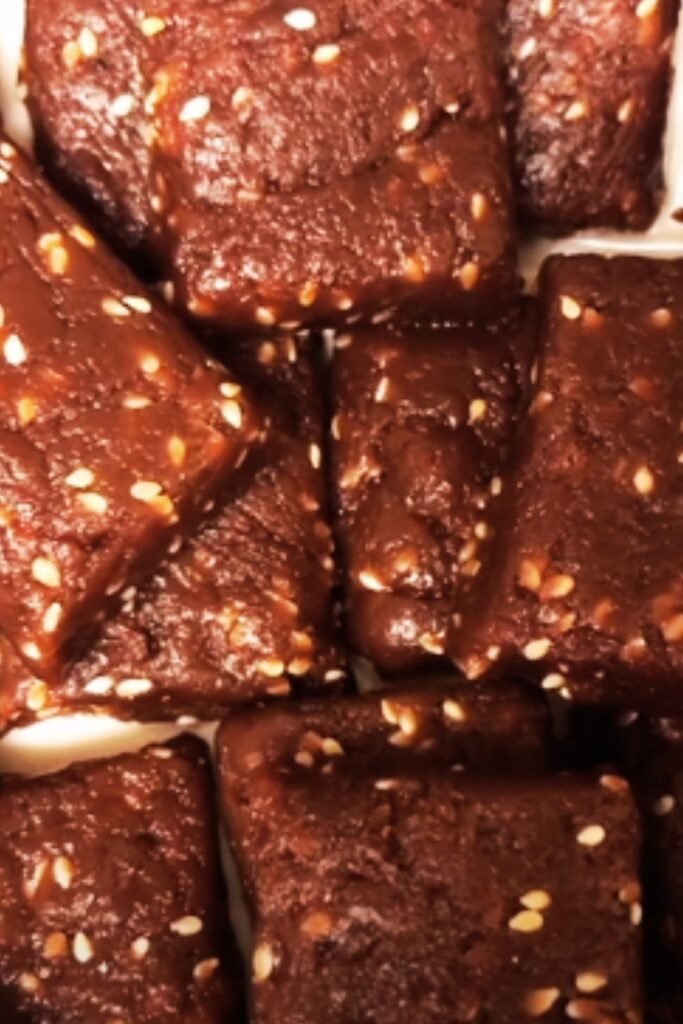
One of the things I love most about mochi brownies is how versatile they are. Here are some of my favorite variations that I’ve developed over the years:
Matcha Mochi Brownies
Add 2 tablespoons of high-quality matcha powder to the dry ingredients for a Japanese-inspired twist. The earthy bitterness of matcha beautifully complements the sweetness of the brownies.
Black Sesame Mochi Brownies
Replace 1/4 cup of the glutinous rice flour with ground black sesame seeds for a nutty, slightly savory variation. The striking black color also makes for a dramatic presentation.
Coconut Mochi Brownies
Use coconut milk instead of regular milk, add 1/2 cup of shredded coconut to the batter, and top with toasted coconut flakes before baking for a tropical twist.
Miso Caramel Mochi Brownies
Swirl 1/2 cup of miso caramel sauce (1/4 cup caramel mixed with 1 tablespoon of white miso paste) into the batter before baking for a sweet-savory combination that will blow your mind.
Red Bean Mochi Brownies
Fold 1/2 cup of sweetened red bean paste into the batter for a traditional Japanese flavor pairing that works surprisingly well with chocolate.
Decorating and Serving Suggestions
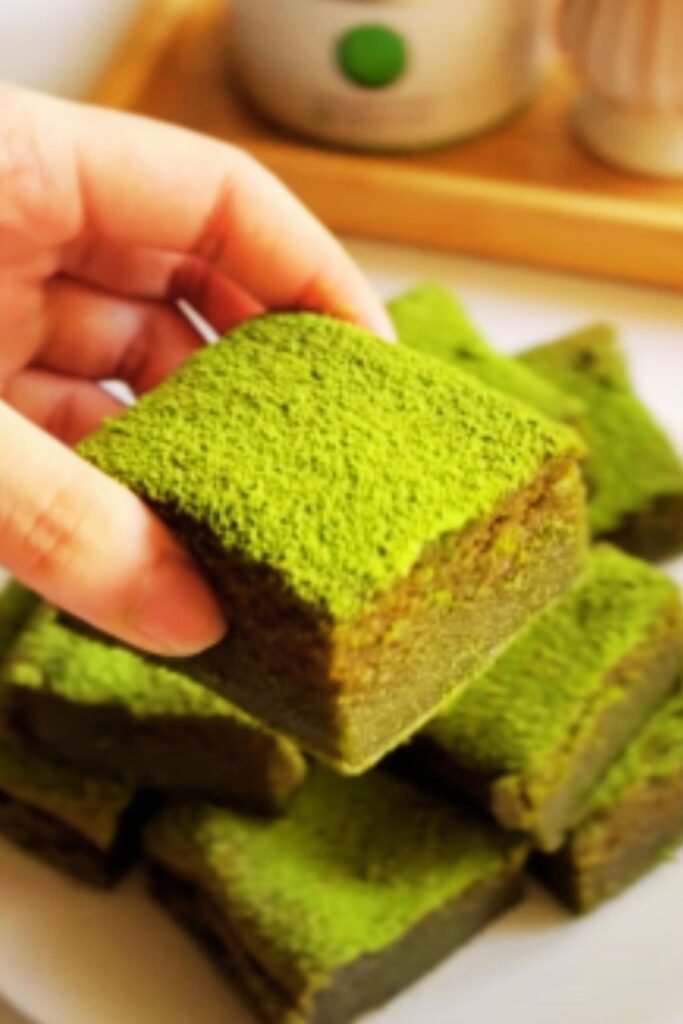
Mochi brownies are delicious on their own, but here are some ways I like to elevate them for special occasions:
- Dust with a combination of powdered sugar and cocoa powder for an elegant finish
- Drizzle with melted white chocolate for a striking contrast
- Top with fresh berries for a pop of color and freshness
- Serve slightly warmed with a scoop of green tea ice cream
- Cut into small pieces and arrange on a platter with fresh mint leaves and edible flowers for a beautiful dessert board
- Wrap individual pieces in colorful wax paper for homemade gifts
- Serve with a dollop of whipped cream flavored with a hint of matcha or black sesame
Storage and Make-Ahead Tips
Mochi brownies have slightly different storage requirements than traditional brownies due to their rice flour base. Here’s how I handle storage:
Short-term storage: Store in an airtight container at room temperature for up to 2 days. Place parchment paper between layers to prevent sticking.
Refrigeration: For longer storage, refrigerate for up to 5 days. The texture will firm up considerably in the refrigerator, so I recommend letting them come to room temperature before serving, or briefly warming them.
Freezing: Mochi brownies freeze beautifully for up to 3 months. Wrap individual pieces tightly in plastic wrap, then place in a freezer bag. Thaw at room temperature or warm slightly in the microwave before serving.
Make-ahead tips: You can prepare the batter up to a day in advance and store it in the refrigerator. Let it come to room temperature for about 30 minutes before baking.
Nutritional Information and Dietary Adaptations
One of the great things about mochi brownies is that they’re naturally gluten-free, making them an excellent option for those with gluten sensitivities or celiac disease. Here’s a basic nutritional breakdown per serving (assuming you cut the pan into 16 brownies):
| Nutrient | Amount per Serving |
|---|---|
| Calories | Approximately 290 |
| Total Fat | 12g |
| Saturated Fat | 7g |
| Cholesterol | 65mg |
| Sodium | 95mg |
| Total Carbohydrates | 43g |
| Dietary Fiber | 2g |
| Sugars | 25g |
| Protein | 4g |
Dietary Adaptations:
Dairy-free/Vegan: Use coconut oil instead of butter, coconut milk instead of whole milk, and replace eggs with a suitable egg replacement (aquafaba works well here).
Lower sugar: Reduce the sugar by up to 1/3 without significantly affecting the texture. You can also use coconut sugar or a monk fruit/erythritol blend for a lower glycemic option.
Higher protein: Add 1/4 cup of unflavored protein powder to the dry ingredients for a more satiating treat.
Troubleshooting Common Issues
Even with the best recipe, things can sometimes go wrong. Here are solutions to common issues you might encounter when making mochi brownies:
Too dry or crumbly: This usually means they’ve been overbaked. Next time, reduce the baking time by 5-10 minutes. You can also add an extra egg or a bit more milk to the batter.
Too gooey in the center: If your brownies aren’t setting up properly, they may need more time in the oven. Every oven is different, so use the toothpick test rather than relying solely on timing.
Brownies stick to the pan: Always use parchment paper with overhanging edges for easy removal. If you forgot this step, try running a thin knife around the edges and then placing the pan in the refrigerator for 30 minutes before attempting to remove the brownies.
Uneven texture: This could be due to undermixing the batter or uneven oven temperature. Make sure to mix thoroughly and consider rotating the pan halfway through baking.
Too sweet or not sweet enough: Feel free to adjust the sugar to your taste preference. The amount of sugar can be reduced by up to 1/3 without significantly affecting the texture.
Frequently Asked Questions
Q: Can I use regular rice flour instead of glutinous rice flour?
A: No, regular rice flour will not give you the same chewy texture that makes mochi brownies special. Glutinous rice flour (also called sweet rice flour or mochiko) is essential for this recipe.
Q: Why are my mochi brownies too hard the next day?
A: Mochi tends to firm up as it cools, especially when refrigerated. To soften them, microwave individual pieces for 10-15 seconds or let them come to room temperature for about 30 minutes before serving.
Q: Can I make these in advance for a party?
A: Yes! You can make them 1-2 days in advance and store them in an airtight container at room temperature. For the freshest taste and texture, I recommend making them no more than 48 hours before serving.
Q: How do I know when mochi brownies are done baking?
A: Mochi brownies are done when the edges are set but the center is still slightly soft. A toothpick inserted into the center should come out with a few moist crumbs, not completely clean (which would indicate overbaking).
Q: Why did my brownies sink in the middle?
A: This could be due to underbaking or opening the oven door too early in the baking process. Make sure your oven is fully preheated before baking, and try not to open the oven door for the first 30 minutes of baking.
Q: Can I add nuts to this recipe?
A: Absolutely! Toasted walnuts, pecans, or macadamia nuts make wonderful additions. Add about 3/4 cup of chopped nuts to the batter along with the chocolate chips.
Q: Are mochi brownies supposed to be this chewy?
A: Yes, the distinctive chewy texture is what makes them unique! If you find them too chewy for your preference, you can replace up to 1/4 of the glutinous rice flour with all-purpose flour for a slightly less chewy result.
Why You’ll Fall in Love with Mochi Brownies
After experimenting with countless dessert recipes over the years, I’ve found that mochi brownies hold a special place in my heart – and my kitchen rotation. They’re impressive enough for special occasions but simple enough for everyday treats. The unique texture creates a memorable eating experience that guests will talk about long after the last crumb is gone.
What I love most about them is how they represent the best of culinary fusion – respecting the traditions of both mochi and brownies while creating something entirely new and delightful. The way the chewy texture gives way to rich chocolate flavor makes each bite an adventure in texture and taste.
Whether you’re an experienced baker looking to expand your repertoire or a novice eager to try something unique, I encourage you to give mochi brownies a try. They might just become your new favorite dessert – they certainly became mine!
So gather your ingredients, preheat that oven, and prepare to embark on a delicious journey that bridges culinary traditions. Your taste buds will thank you for the experience.

